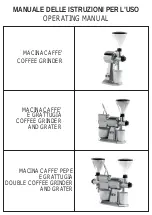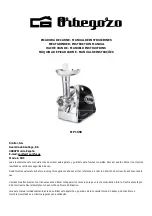
14
| English
3 609 929 C83 | (30.4.14)
Bosch Power Tools
Selection of Removal Rate
Two operating modes with different removal rates are availa-
ble. To change the removal rate, press the unlocking button
2
and turn the mode selector switch
3
until it can be heard to
latch at the symbol of the requested operating mode.
Do not change the operating mode while sanding!
Dan-
ger of injury.
Operating Mode 1 (Forced Drive)
This operating mode with high material re-
moval is recommended for working very
rough, insensitive surfaces as well as for buffing. As a result of
the forced drive, the sanding plate has constant eccentricity
and rotational movement.
Operating Mode 2 (Free Running)
This operating mode is recommended for
handling sensitive surfaces as well as for fine
polishing. As a result of the free running sanding plate, an ap-
plication-pressure dependent rotational movement at con-
stant eccentric motion is achieved. By varying the application
pressure, the material removal can also be regulated.
Working Advice
Before any work on the machine itself, pull the mains
plug.
Wait until the machine has come to a standstill before
placing it down.
Sanding Surfaces
Switch the machine on, place it with the complete sanding
surface on the surface to be worked and move the machine
with moderate pressure over the workpiece.
The removal capacity and the sanding pattern are mainly de-
termined by the selection of the sanding sheet, the preselect-
ed orbital stroke rate and the applied pressure.
Only flawless sanding sheets achieve good sanding capacity
and extend the service life of the machine.
Pay attention to apply uniform sanding pressure; this increas-
es the working life of the sanding sheets.
Intensifiying the sanding pressure does not lead to an in-
crease of the sanding capacity, but to increased wear of the
machine and the sanding sheet.
A sanding sheet that has been used for metal should not be
used for other materials.
Use only original Bosch sanding accessories.
Rough Sanding
Attach a sanding sheet with coarse grain.
Apply only light pressure to the machine so that it runs at a
higher stroke rate and high material removal is achieved.
Fine Sanding
Attach a sanding sheet with fine grain.
By lightly varying the application pressure or changing the or-
bital stroke rate, the sanding plate stroke rate can be reduced
whereby the orbital action is maintained.
With moderate pressure, move the machine in a circular pat-
tern or alternately in lengthwise and crosswise directions
over the workpiece. Do not tilt the machine to avoid sanding
through the workpiece (e. g. when sanding veneer).
After finishing the working procedure, switch the power tool
off.
Polishing
Note:
For polishing, the extraction outlet piece
12
can be re-
moved for easier handling of the machine and to prevent dam-
age to the workpiece.
For the polishing of weathered paint or buffing out scratches
(e.g., acrylic glass), the machine can be equipped with appro-
priate polishing accessories such as lamb’s wool bonnet, pol-
ishing felt or sponge (accessories).
Select a low stroke rate (setting 1–2) for polishing in order to
avoid excessive heating of the surface.
Apply the polish onto a somewhat smaller surface than you in-
tend to polish. Work the polishing agent in with a suitable pol-
ishing tool applying it crosswise or with circular motion and
moderate pressure.
Do not allow the polishing agent to dry out on the surface, oth-
erwise the surface can become damaged. Do not subject the
surface to be polished to direct sunlight.
Clean the polishing accessories regularly to ensure good pol-
ishing results. Wash out polishing accessories with a mild de-
tergent and warm water; do not use paint thinner.
Maintenance and Service
Maintenance and Cleaning
Before any work on the machine itself, pull the mains
plug.
For safe and proper working, always keep the machine
and ventilation slots clean.
If the replacement of the supply cord is necessary, this has to
be done by Bosch or an authorized Bosch service agent in or-
der to avoid a safety hazard.
When changing the sanding plate, check the sealing collar
4
for damage. Have a damaged sealing collar replaced by your
Bosch after-sales service agent.
After-sales Service and Application Service
Our after-sales service responds to your questions concern-
ing maintenance and repair of your product as well as spare
parts. Exploded views and information on spare parts can al-
so be found under:
www.bosch-pt.com
Bosch’s application service team will gladly answer questions
concerning our products and their accessories.
In all correspondence and spare parts order, please always in-
clude the 10-digit article number given on the type plate of
the machine.
OBJ_BUCH-522-005.book Page 14 Wednesday, April 30, 2014 3:07 PM















































